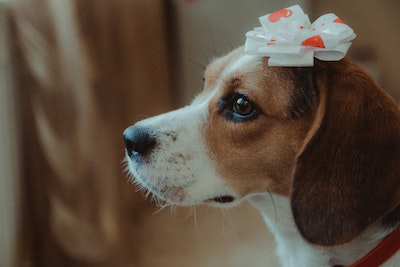
The day before the royal wedding between Prince Harry and Meghan Markl e, Queen Elizabeth II’s Range Rover was seen driving toward Windsor, the Queen in the back seat with “Gus,” Markle’s Beagle.
e, Queen Elizabeth II’s Range Rover was seen driving toward Windsor, the Queen in the back seat with “Gus,” Markle’s Beagle.
The day after the royal wedding, the Kennel Club reported a 42% rise in searches for Beagles, with a 50% increase this week. Sadly, this probably surprises no one. The question is rhetorical, but why does it take a royal wedding to remind people of a dandy breed that’s been around a very long time?
Beagle-type dogs were known in 400 BC in Greece, and King Henry VII and Queen Elizabeth I were both known for their love of Beagles (called “Pocket Beagles” at the time for their size), though cynologists point out that “beagle’ referred to any dog that was a hound during medieval times.
The breed as we know it today went through several hands, figuratively speaking. Reverend Phillip Honeywood “Honeywood’s Beagles” of around 1830 were pure white and smaller than today’s Beagle, while Thomas Johnson sought to breed dogs that were attractive and great hunters. His breeding program lead to a dog with a rough coat, and one with a smooth coat. In the mid 19th century, a Beagle “type” was beginning to emerge, but there was still enough variation to make four different types distinguishable: The medium Beagle, the dwarf Beagle; the fox Beagle (described as a smaller, slower version of the Foxhound); and the rough-coated Beagle. The types, however, were beginning to converge. In 1890, the Beagle Club was organized, and the first breed standard written. With the Association of Masters of Harriers and Beagles, the two organizations pursued one standard type of Beagle.
